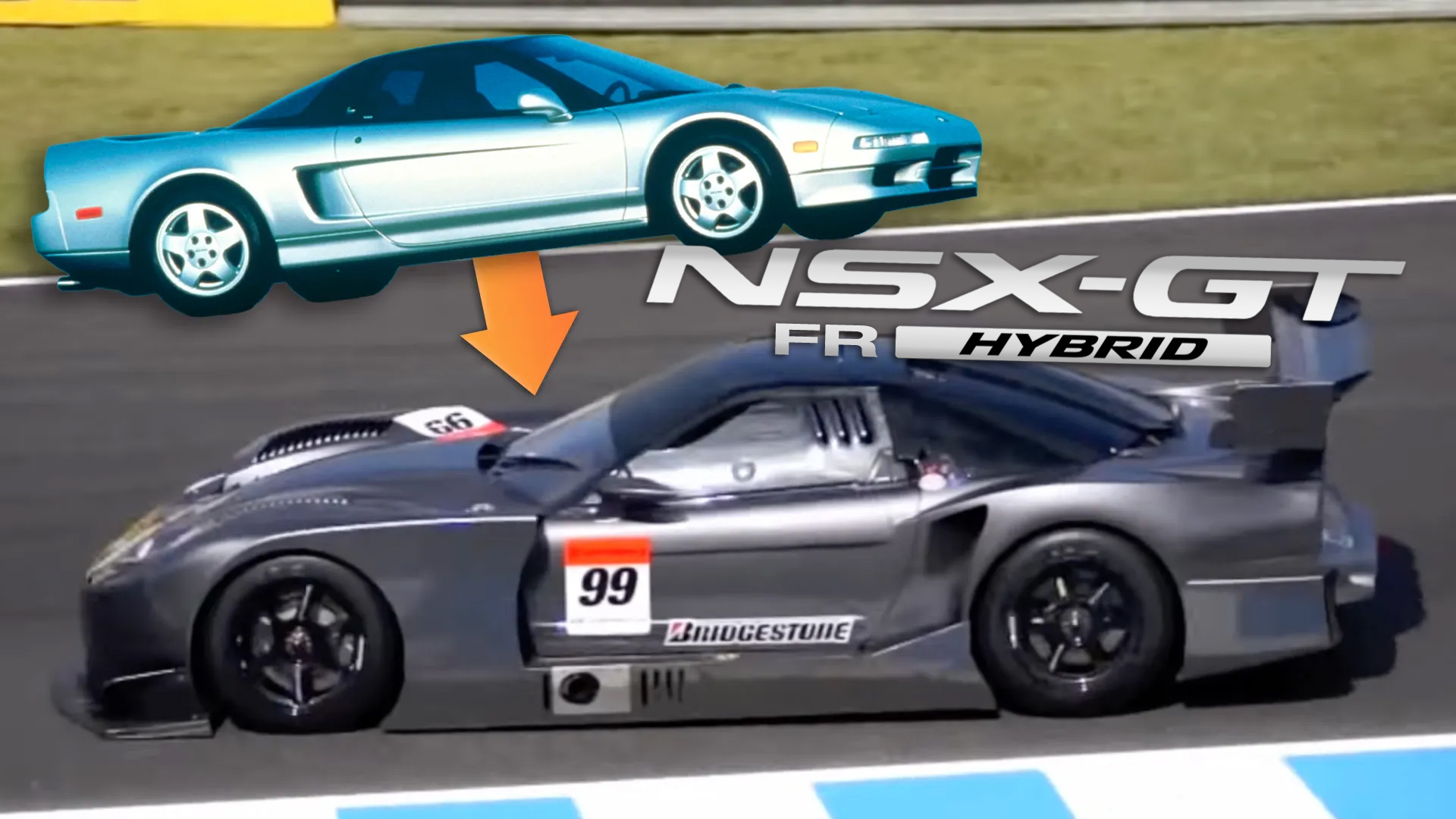

The Honda NSX has always had its engine where it ought to be: in the middle, behind the driver. But there was a time in the late 2000s when Honda expected to change that formula, and move the NSX’s engine up front. So, it built one just to try things out, only it hid a surprise under the hood—a groundbreaking hybrid V8.
This adaptation of the NSX was built in the late 2000s out of Honda’s top Super GT racer, its GT500-class NSX-GT. Honda had been racing the NSX since the JGTC days in 1996, but had ceased production in 2005, and needed a replacement. At the same time, Super GT was looking to shake up its ruleset for 2009. Specifically, it planned to mandate a front-mounted engine no larger than 3.4 liters. The easiest way to build a test mule was to modify an existing NSX chassis, and the result was more than a little strange-looking.

First run in 2007 (according to the description of the video above), the front-engined NSX is seen here testing in late 2009. Though this version doesn’t sport the awkward, nonfunctional roof scoop of the previous prototype, its proportions are still strange with the recognizable NSX cabin mated to a long hood covering a longitudinally mounted engine. You’ve also probably noticed that it doesn’t sound great, especially compared to the revvy 3.5-liter of the car it was to replace. That’s because this NSX wasn’t just testing a new engine location, but an entirely new powertrain that previewed both the future of Super GT and the NSX.
For a combustion engine, the NSX-GT FR Hybrid (as some call it) used a 3.4-liter V8 derived from the Formula Nippon (now Super Formula) motor. It was paired with a then cutting-edge KERS hybrid system, which was a fresh technology even in Formula 1 at the time. Super GT was considering introducing the tech too, and Honda apparently volunteered this NSX as a development vehicle, sharing data with rivals Lexus and Nissan. Presumably, they paid for some of its operating costs.
There was still more going on behind the scenes though, because this test mule was for more than just a next-gen drivetrain. This prototype was in fact a link between the mid-engined NSX of the past and a completely different, front-engined one Honda had under development.

According to Daily Sportscar (which cites Japan’s Auto Sport Magazine), this hodgepodge was a prototype for Honda’s subsequent Super GT car, the HSV-010 GT. The HSV-010 is famous for being Honda’s intended successor to the NSX, with a front-mounted, naturally aspirated V10 thought to be about 5.5 liters. That would’ve made it more than a little similar to the Lexus LFA, which went into production in 2010, the same year the HSV-010 first raced.
Unfortunately, the HSV-010 (and thereby front-engine NSX) suffered from the same circumstances that hamstrung the legendary Lexus: the global recession. Lexus struggled to sell its ultra-expensive halo car, which Honda presumably noticed, and took to mean it wasn’t the time to launch a front-engined V10 supercar of its own.
In the end, the NSX road car program was scuttled even as the HSV-010 went onto compete—until 2013, in fact—albeit without the hybrid powertrain Honda had tested. The company eventually employed KERS in Super GT between 2014 and 2016, and utilized hybrid power in its second-generation NSX. This NSX too would go front-engined for the racetrack, with Super GT switching to a DTM-like spec requiring front-mounted turbo 2.0-liters in 2020. Still, of all the fates that could have befallen the NSX, it’s hard not to see this one as the least preferable. The best outcome would’ve been the V10 NSX becoming a reality, and taking its rightful place in the supercar hall of fame. Thanks again, Wall Street.
Got a tip or question for the author? You can reach them here: james@thedrive.com